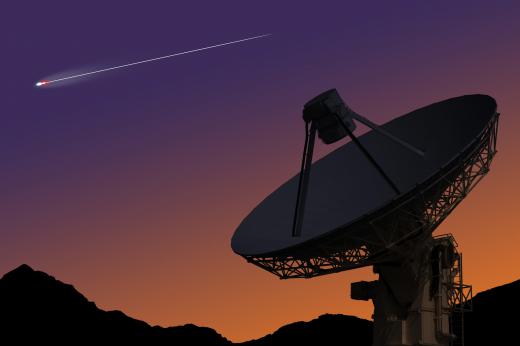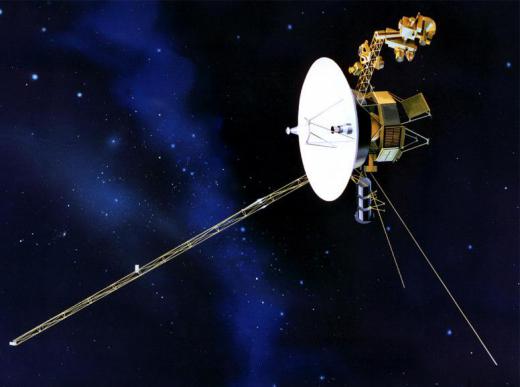What are Some Prominent Features of Uranus?
 Michael Anissimov
Michael Anissimov
Uranus is a large bluish planet orbiting about 19 AUs (Earth-Sun distances) from the Sun. With a diameter equivalent to four Earths, and a mass slightly over 14.5 Earths, Uranus is the third-largest planet in the solar system, after Jupiter and Saturn. Although it is primarily composed of hydrogen gas, Uranus and its sister planet Neptune are often referred to as "ice giants" rather than "gas giants" because of their different composition from the latter. The aquamarine color of Uranus comes from small amounts of methane ice suspended in its primarily hydrogen atmosphere.
Although Uranus can be seen with the naked eye, and has been observed since prehistoric times, people always mistake it for a star. For this reason Uranus was not discovered to be a planet until Sir William Herschel observed it on 13 March 1781. Unfortunately, he initially thought it was a comet. When he sent his observations to other astronomers so they could take a look at it, many suspected it was actually a planet. After a couple years its planethood was universally acknowledged, and the name Uranus caught on, even though it was initially named "George's Star" in honor of King George III.

Uranus revolves around the Sun every 84 or so Earth years, orbiting at a distance about 3 billion km. Uranus is unique for being an oddly cold planet - although Neptune generates about 2.4 more heat than it receives from the Sun, Uranus barely generates heat at all. The reasons why are not entirely known. The 49K temperature of some of its cloud features is the lowest measured temperature in the solar system, taken by the Voyager 2 probe when it made a flyby in 1986.

Uranus has a number of small rings and 27 known moons. The largest are Miranda, Ariel, Umbriel, Titania and Oberon, although the satellite system of Uranus has the lowest mass out of any of the outer planets. Miranda has some fault canyons as deep as 20 km (12 mi) and chaotic surface features, suggesting that it may have been blown apart entirely by an impact in the distant past, reforming only haphazardly.
Uranus is unique for having the largest axial tilt out of any planet in the solar system, 97.77°, meaning days and nights on certain portions of the planet last for decades. Out of all the gas giants, it is the most featureless, although a small dark spot was observed in 2005.
AS FEATURED ON:
AS FEATURED ON:












Discuss this Article
Post your comments